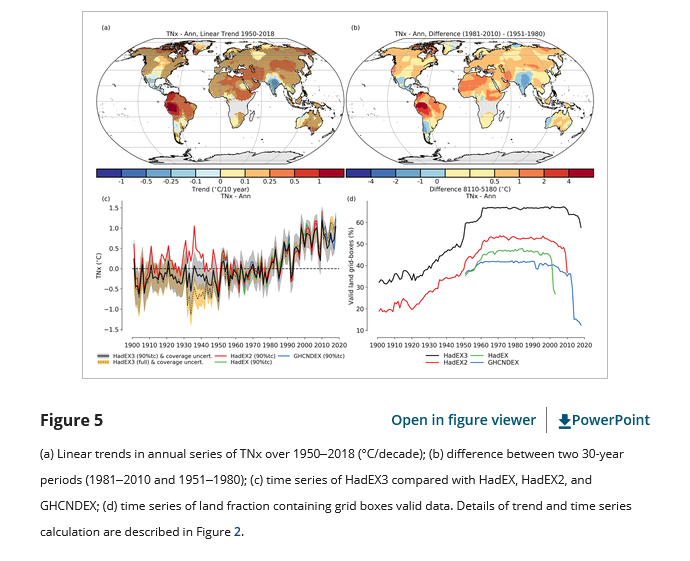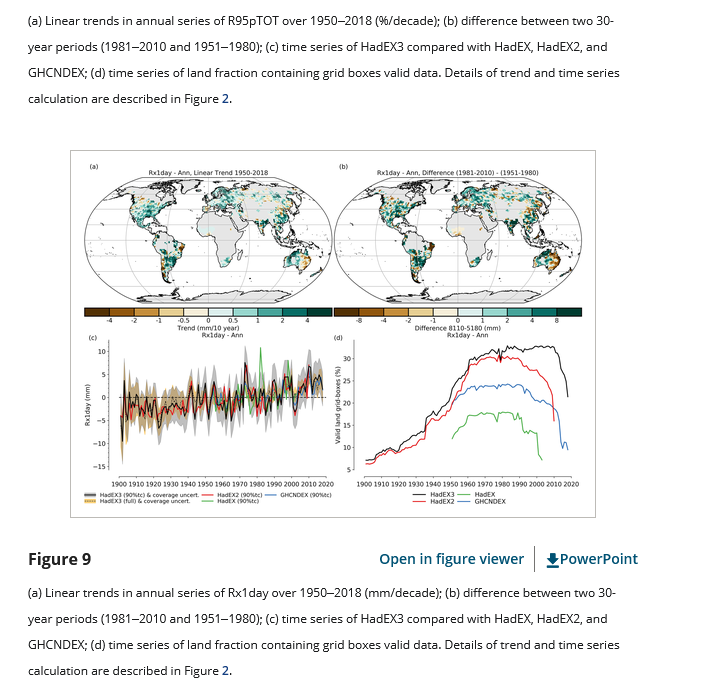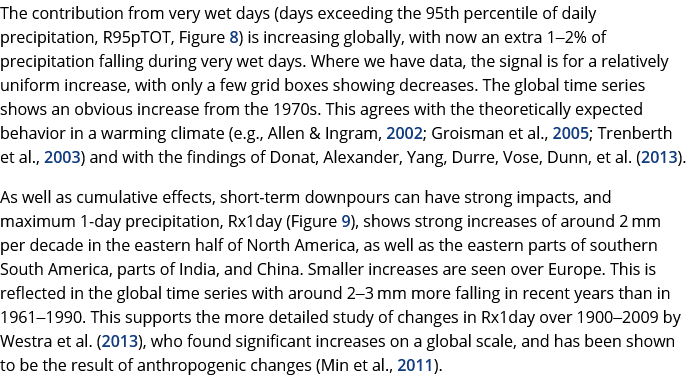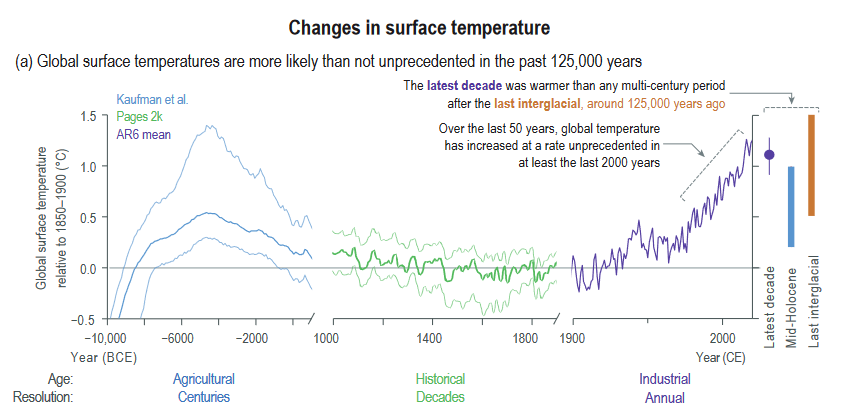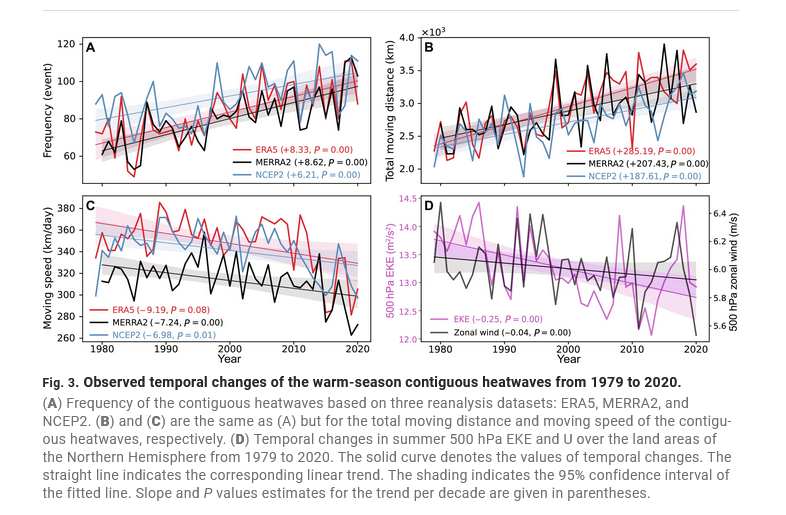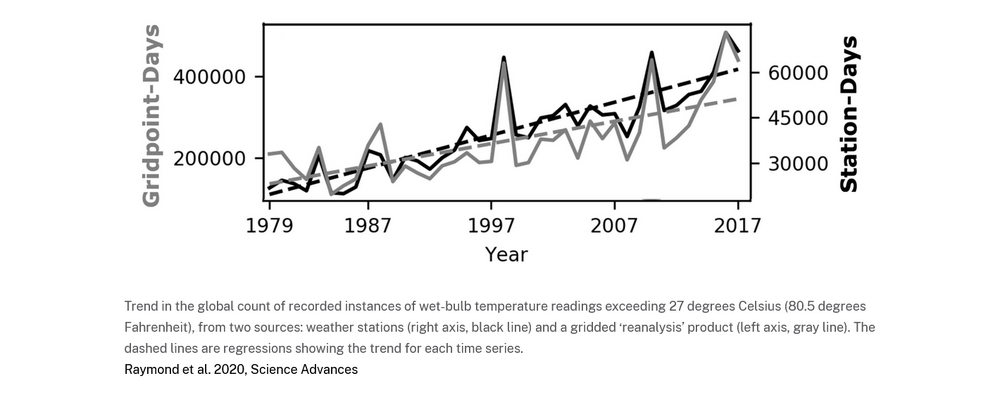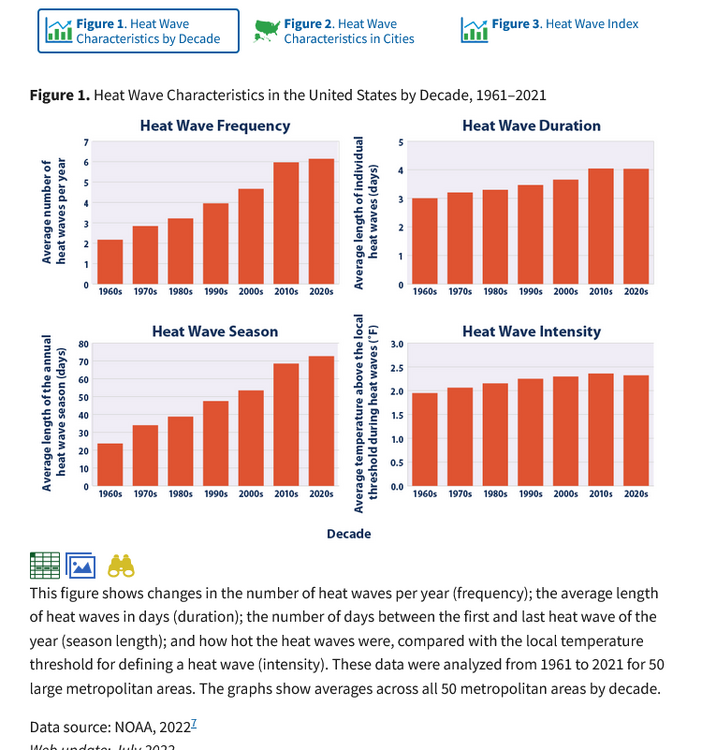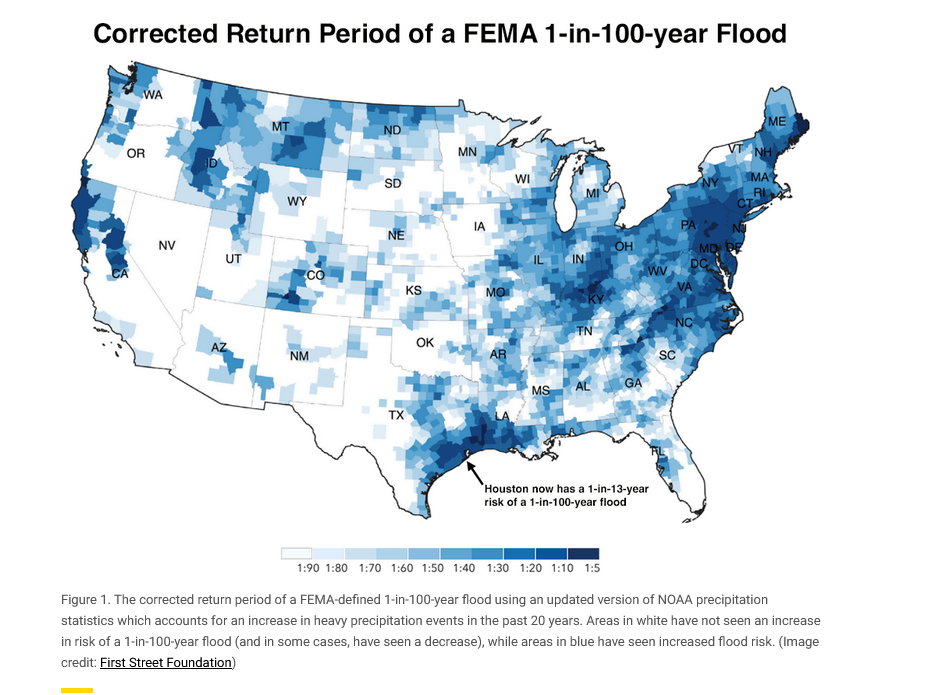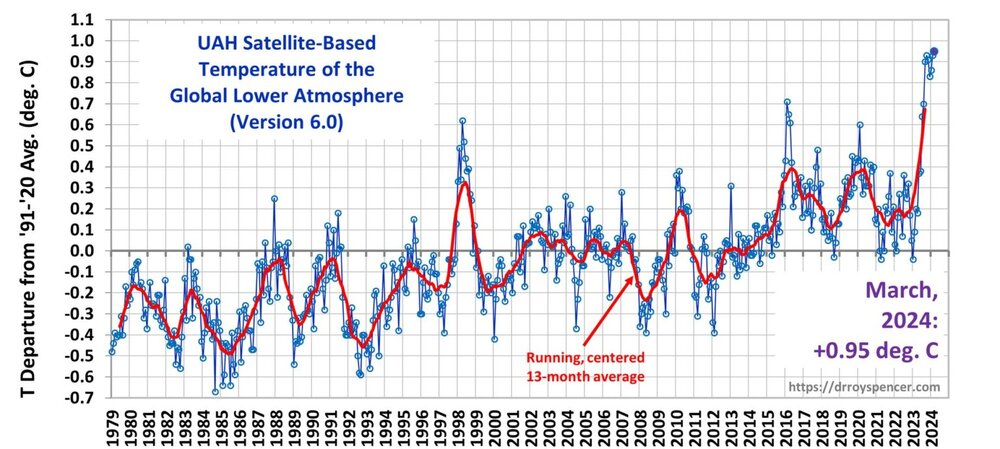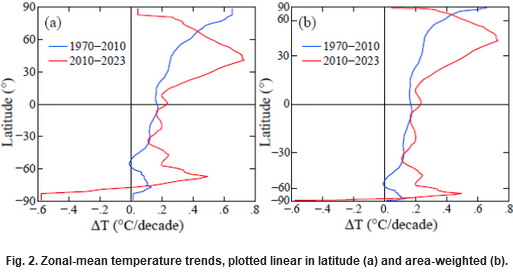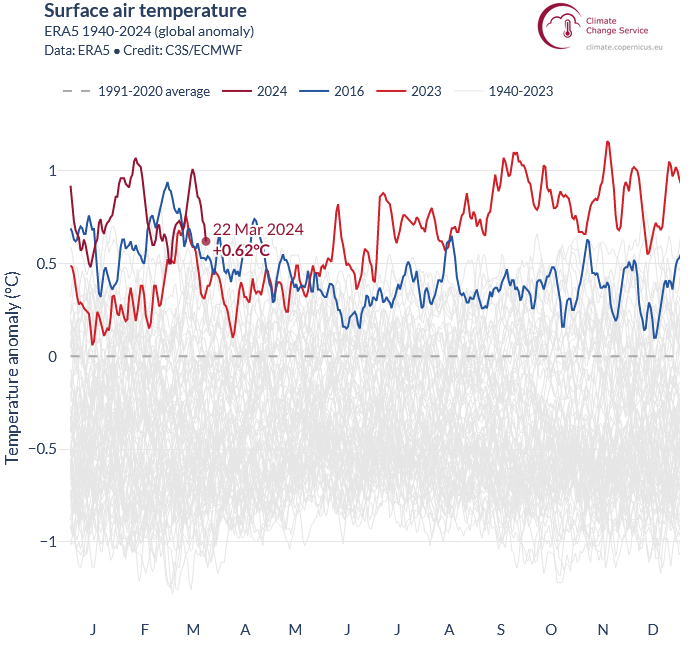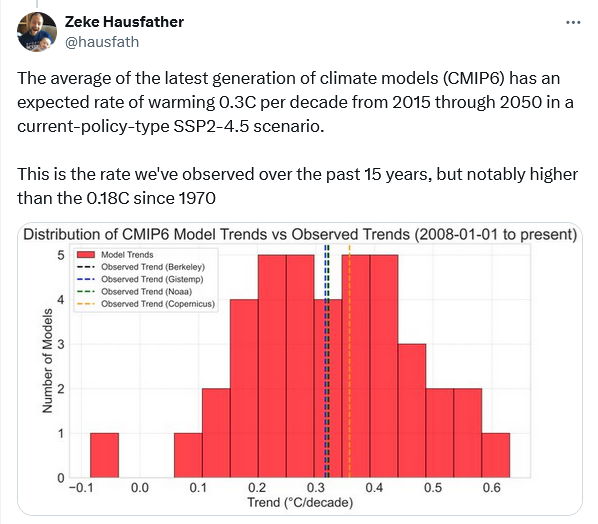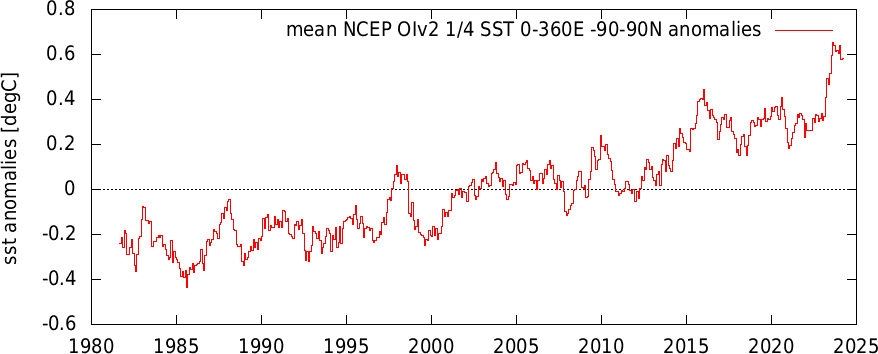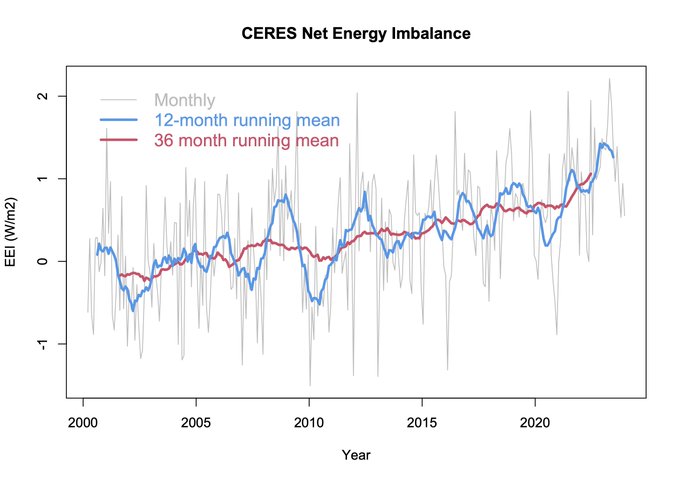
chubbs
Members-
Posts
3,580 -
Joined
-
Last visited
Content Type
Profiles
Blogs
Forums
American Weather
Media Demo
Store
Gallery
Everything posted by chubbs
-
I agree that albedo effects from fertilization are not.as important as CO2 radiation effects or plant evapotranspiration, which is important in the case of midwest corn. On-the-other hand, don't think Maguire has debunked albedo effects either. CO2 fertilization has a relatively small climate effect that needs to be evaluated carefully to determine if it is positive or negative. Found a paper (link below) which isolated the biophysical effects of CO2 fertilization on climate. CO2 fertilization had a net warming due to effect mainly due to the albedo effect of the northward advance of Boreal forests. Considered separately in the paper, increased CO2 sequestration would offset the albedo effect in the short-term but not in the long-term. In any case the climate effects of CO2 fertilization are small,and the radiation effects of CO2 are dominating. Note also that increasing CO2, increases atmospheric water vapor leading to a radiation effect that is in the same ballpark as the effect of increased CO2 alone. https://www.tandfonline.com/doi/pdf/10.1111/j.1600-0889.2006.00210.x
-
I don't know Paul, I get a different picture after checking the reference. For one thing I couldn't find the chart you posted. It must be from the supporting material. As for the body of the paper, it showed clear evidence for climate change in temperature and heavy precipitation. Below is a text snippet, a couple of charts and the paper link. This leaves me wondering where you get your information from. https://agupubs.onlinelibrary.wiley.com/doi/10.1029/2019JD032263
-
I have no problem going back before 1960. I'll go way back, but I'm not going to limit myself to a small slice of biased data. No. I want to look at all the data and use the best methods to analyze it. From the last IPCC report
-
Don't get me wrong there are many reasons to plant trees and trees produce a net cooling in many parts of the world. Once it is in the atmosphere removing CO2 will be costly and slow. Using renewables/batteries/electrification to not emit CO2 in the first place is by far the cheapest strategy, particularly with costs continuing to drop.
-
Related to the CO2 fertilization post above, the recent study below accounted for the albedo effect of planting trees. In many places around the world, planting trees causes warming, as increases in absorbed sunlight offset the benefit from CO removal. https://www.nature.com/articles/s41467-024-46577-1
-
The article linked was more sanguine about CO2 effects than your write up. Not all of the greening is due to CO2 and increased greening is a mixed blessing. Your description of radiation effects isn't correct. Increased photosynthesis causes plants to absorb more sunlight, and reflect less, so greening generally causes warming. The effect is particularly large in the arctic where greening is mainly due to expansion of shrubs and trees northward. The greener surface absorbs much more sunlight than the snow or tundra surface it replaces. I believe these effects are included in models but am not familiar with the details. Finally here's a short interview with an ag expert, who expects a negative impact from CO2 on agriculture in most areas. https://www.theclimatebrink.com/p/is-co2-plant-food
-
This recent study shows that global heat waves are becoming more frequent, lasting longer, covering larger areas, moving slower, and bringing higher temperatures. https://www.science.org/doi/10.1126/sciadv.adl1598 Compounding the effects of high temperature, global dew point and wet bulb temperatures are also rising.
-
-
You can't prove your assertions either. I can provide evidence of climate and weather change, reams of evidence. That's something you are short on..
-
Don't blame me for the "alarmist" talking points, those are Investopedia's points. In a similar vein here's a story on rising Insurance costs in Texas from the Texas Tribune. Hopefully you won't find the climate aspect too alarming. https://www.texastribune.org/2023/11/30/texas-homeowner-insurance-climate-change-costs/ The science is simple and not controversial. Warmer air holds more water. Droughts, fires, storms etc., behave differently in a warmer world. Your talking point sounds good but misses the mark technically. The fact that we have always had these events is a reason to be concerned, not relieved. In a warmer world, thunderstorms have more CAPE, hurricanes higher OHC, rain storms more water vapor, fires and droughts accelerated drying conditions. Per chart below, locally a 100-year flood is now a 20-year flood. I am going to throw it back on you – What weather events aren't being impacted by climate change?
-
Love the denier talking point logic: The climate has always changed; but, storms, droughts, heat waves. etc. never change. Why bother Don, the information you are requesting is widely available. A google search brought a long list of articles on climate change impacts on insurance rates. Here's an example. https://www.investopedia.com/the-costs-of-climate-change-are-already-here-in-your-insurance-bill-8414294 Climate change is partly responsible for a recent surge in insurance premiums, and the costs will continue to mount in the future. Climate change makes storms, extreme heat, floods, and other catastrophes more likely. Insurers are passing the increasing costs of paying claims on to consumers.
-
It's obvious that there is inconsistency in UAH during the NOAA 14 and 15 transition. Warming is rapid now that enough data has accumulated after the transition for trend analysis. I can recall Spencer saying that climate change would be a concern if warming reached 0.2C per decade. Wonder how long it will take him to notice that UAH6 has blown by his own concern threshold.
-
March was another record monthly anomaly on UAH. The temperature spike during this nino is unusually large in UAH, as large or larger than 97-98 judging by the 13-month running mean, which will continue to increase for a few months. Measurement inconsistency through the years likely contributing. Top 5 March's in UAH below: 1 2024 0.95 2 2016 0.65 3 2010 0.38 4 2020 0.35 5 1998 0.34
-
Another chart in Hanson's latest. Since 2010 max warming has shifted from arctic to mid-latitude in the NHemi (and to lesser extent in SHemi). Consistent with warm winters we have had recently.
-
-
Yes we are still breaking daily re-analysis records, but not by "gobsmacking" amounts like we were in the second half of last year. Anomalies are running closer to where you would expect them to be, above last year and moderately above 2016, the last strong nino. We have been in a rough anomaly plateau since last September. With la nina developing, and normal seasonal effects, would expect anomalies to begin to drop soon, similar to 2016, and to cool below 2023 later in the year. We'll see.
-
We are approaching 1.5C of warming, when climate change impacts ramp, and the global warming rate has increased. Not a good place to be, and we have no excuse, it was well predicted.
-
A number of relatively small items are aiding warming. We are near the peak of a solar cycle that is stronger than the last cycle (see chart below). Haven't seen a definitive accounting but the Hunga Tonga volcano is likely a small plus warming factor. Finally man-made forcing is increasing at a faster rate in the past 10 years as aerosol emissions come down due to air pollution control..
-
Related to the point I made above. Nino34 wasn't a good metric for this nino. Nino12+3 warmed fast and early, leading nino34, and triggering the global SST rise. Of course other factors played a role. The large radiation imbalance during the nina years warmed the subsurface, which primed the pump.
-
Think the Gavin S and other experts are underestimating the effect of this nino. The timing fits a nino response but with faster onset and a larger overall warming than we have seen in the satellite era. Those features can be explained by the rapid warming in the east Pacific last spring. Global SST have peaked and are starting to fall. We'll see if this nino has a lasting impact on SST like the 15/16 nino.
-
I see why you like the "averaging" method. It shows less warming than the data collected in your own backyard
-
Your county averaging method doesn't agree with your own Chescowx series and the year-to-year differences are probably even larger; smoothed somewhat by the decade averaging. Not surprising because you aren't controlling for differences in average temperature between stations. Every time you add or subtract a station you change the average. NOAA on-the-other-hand agrees very well with the ERA5 re-analysis developed by EMWCF, both on year-to-year temperature changes and on the overall warming since 1950. NOAA and ERA5 are completely independent using different datasets and methods, so agreement at the County level increases confidence in both series. Bottom-line - scientists have a good handle on Chester County temperature trends. If you aren't matching NOAA or ERA5 you aren't getting an accurate depiction of our local climate. Below is a link which provides background on ERA5, which has land temperature data back to 1950. Note that I can only get ERA data for a lat/long square that approximates Chesco. https://climate.copernicus.eu/climate-reanalysis
-
As usual you are jumping to the wrong conclusion based on lousy analysis. You aren't controlling for differences in average temperature between stations. Every time you change the stations included in your County average, you get a different result. To get a cooler result add in some relatively cool stations. I don't see any recent "warming adjustment" for NOAA when I compare to your own Chescowx series. Quite the contrary NOAA and Chescowx are in good agreement on the warming rate over the past 54 years. Good news for your post-1970 data. As for the older pre-1970 data, yes we know you get a different answer for the raw vs bias adjusted. You are beating a dead horse by making the same comparison over and over again. We have a handful of older stations in Chester County. Adjustments for each station are published and not close to the "adjustments" you are coming up with in your latest. All the adjustments are based on comparison to other stations. If time of observation bias (TOB) didn't impact a particular station it won't contribute to that stations' bias adjustment. There are many reasons for bias adjustment besides TOB: shelter, aspiration, digital vs analog, moving equipment, broken instrument, a tree growing nearby, a tree cut down, etc. Deniers have been complaining about "science-based" station adjustments for decades. But they never complete the technical analysis needed to provide evidence in a scientific forum. Without submitting material to a scientific forum your complaints about adjustments are a waste of time. You can whine all you want on a weather board but it isn't going to move the scientific needle.
-
From Gavin Schmidt's twitter. Net radiation is coming down as atmosphere warming due to the nino increases radiation to space. The decrease in the past year isn't small enough though to put much of a dent in the decade-long increase.
-
Don't have much info on Africa, but this could be the warm season for at least some of area. A portion of Africa is in the SHemi and the rest is tropical, with sun overhead at the spring equinox.

